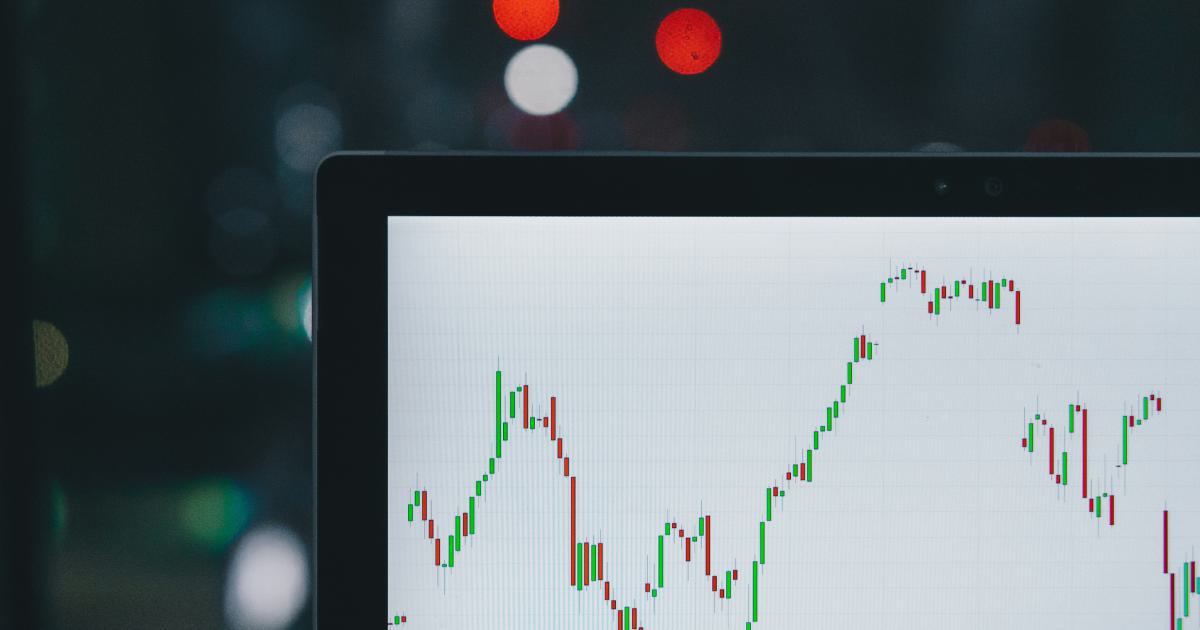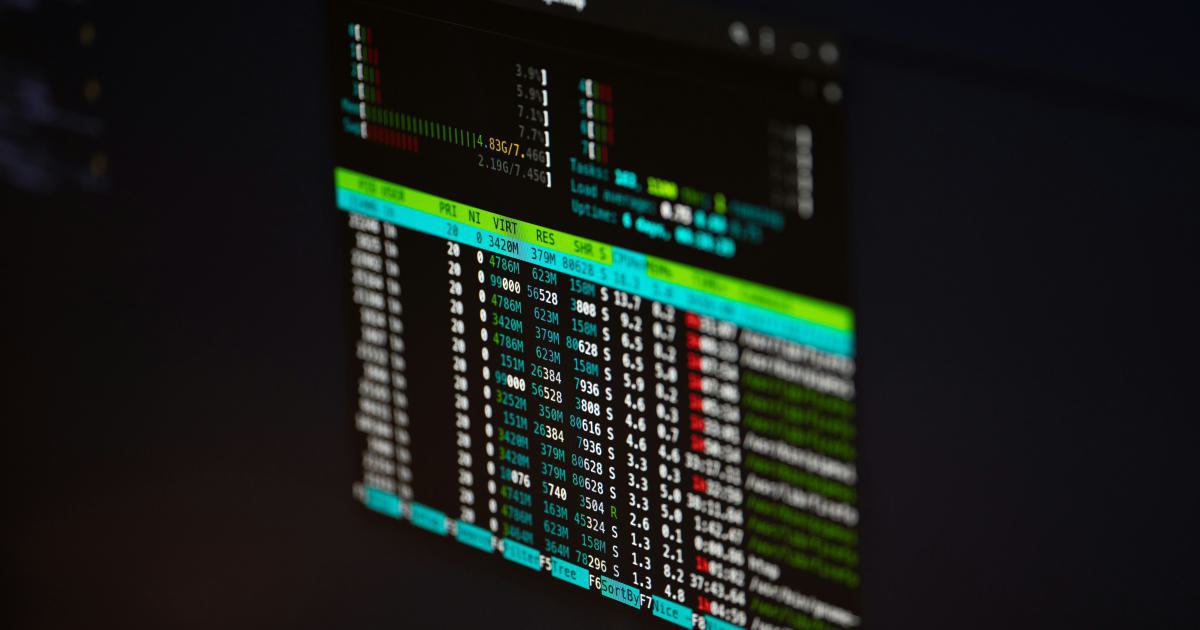Reduce Risk With Advanced Pair Trading Techniques

In today’s dynamic financial environment, investors and traders constantly seek innovative strategies to enhance returns while minimizing risks. Among these, pair trading techniques offer a compelling solution that leverages statistical relationships between securities to manage and reduce exposure. By employing advanced pair trading techniques, market participants can benefit from a systematic approach that not only identifies mispricings but also adjusts positions to hedge against market volatility. This article delves deeply into sophisticated methods designed to reduce risk with advanced pair trading techniques, providing comprehensive insights into their implementation, risk management strategies, and statistical foundations.
Understanding Pair Trading
Pair trading is a market-neutral investment strategy that involves simultaneously taking long and short positions in two correlated assets. The underlying concept is to profit from the divergence and convergence of the price relationship between the chosen securities. This section explores the foundations of pair trading and delineates how and why these techniques have become a staple in risk management for traders worldwide.
The Origins and Basic Concepts
The idea of pair trading started gaining traction in the early 1980s, with many practitioners discovering that by matching paired securities, they could effectively isolate and profit from relative price movements, irrespective of the overall market direction. At its core, pair trading involves selecting two stocks or assets that historically move together due to underlying economic factors. When the price spread between them widens beyond a statistically determined threshold, traders execute trades expecting the spread to revert to its mean over time.
For example, consider two companies within the same industry that often share similar financial dynamics. When one company significantly outperforms or underperforms compared to the other, the mispricing may offer an arbitrage opportunity. Profiting from such fluctuations requires a robust understanding of market conditions, historical co-movements, and a sound statistical framework—a combination commonly referred to as pair trading techniques.
Key Statistical Principles
Pair trading strategies are underpinned by several fundamental statistical principles:
- Mean Reversion: The assumption that the price relationship between two correlated assets will revert to its historical average.
- Cointegration: A statistical property used to determine if a linear combination of two non-stationary series is stationary, providing a foundation for long-term trading relationships.
- Standard Deviation and Z-Scores: Metrics that quantify the degree of deviation from the mean, thus identifying entry and exit points in trades.
Understanding these principles is crucial for any trader aiming to utilize advanced pair trading techniques effectively. Furthermore, data analytics and historical price behavior analysis play an essential role in fine-tuning these strategies to the prevailing market conditions.
Evolution into Advanced Strategies
Traditional pair trading strategies have evolved into more advanced and sophisticated methods over the years. Modern techniques integrate algorithmic trading, machine learning, and high-frequency data analysis to continuously refine the pair selection process and optimize trade execution. This evolution has enhanced the potential of pair trading techniques by allowing investors to respond more rapidly to market fluctuations, reduce transaction costs, and exploit subtle pricing inefficiencies that traditional methods might overlook.
By building on conventional wisdom and integrating state-of-the-art technology, advanced pair trading techniques now offer a more precise, dynamic approach to hedging risk across volatile markets.

Advantages of Advanced Pair Trading Techniques
The transition from conventional pair trading to more advanced techniques offers several notable benefits, particularly for those focused on minimizing risk and improving overall portfolio performance. In this section, we highlight the key advantages that these modern strategies present.
Enhanced Risk Management
One of the most significant advantages is improved risk management. By balancing long and short positions in correlated assets, advanced pair trading techniques help neutralize market movements. This market neutrality ensures that overall portfolio performance is less sensitive to sudden market downturns and unexpected shocks.
Superior Timing and Execution
Advanced techniques incorporate real-time data feeds and algorithmic decision-making processes, which significantly improve the timing and execution of trades. This allows traders to capture fleeting opportunities in the market, where traditional methods might lag behind due to manual intervention or slower response times.
Data-Driven Decision Making
The integration of statistical models and machine learning algorithms allows for more informed decision-making. These techniques analyze large volumes of historical and real-time data to identify patterns that may be invisible to the human eye. As a result, traders can execute strategies based on robust quantitative evidence rather than relying solely on market sentiment or gut instinct.
Flexibility Across Various Market Conditions
Advanced pair trading techniques are highly adaptable. Whether the market is trending, range-bound, or highly volatile, these strategies are designed to perform under a wide range of conditions. Their inherent flexibility makes them particularly valuable during periods of market stress, where maintaining consistency and minimizing downside risk are paramount.
Cost Efficiency and Scalability
Modern algorithmic trading platforms facilitate automated execution of pair trades, reducing execution costs and slippage. Furthermore, automated systems allow for scalability, enabling hedge funds and proprietary trading firms to deploy strategies across multiple asset classes and markets simultaneously.
Risk Management and Hedging Strategies
Implementing effective risk management strategies is pivotal when employing pair trading techniques. This section explores various approaches and provides actionable insights into hedging risk in pair trading strategies.
Diversification and Position Sizing
Diversification is crucial in reducing unsystematic risk. Advanced pair trading techniques often involve spreading trades across multiple pairs that belong to different industries or asset classes. This diversification ensures that the failure of one pair does not disproportionately affect the overall portfolio.
Moreover, proper position sizing can balance exposure among various trades. Traders frequently adopt fixed or dynamic position sizing methods to mitigate risk, ensuring that losses from any single trade are kept within an acceptable threshold relative to portfolio size.
Stop-Loss Orders and Exit Strategies
Stop-loss orders serve as a primary tool for risk management. In advanced pair trading strategies, these orders are not static; they adjust dynamically based on the volatility and historical trading patterns of the asset pair. Additionally, implementing well-defined exit strategies helps secure profits when the price spread begins reverting to its mean, thereby minimizing potential drawdowns.
Correlation and Cointegration Analysis
Continually monitoring the correlation and cointegration between the assets in a pair is essential for maintaining trade validity over time. As market conditions evolve, the historical correlations may change, requiring traders to frequently reassess and adjust their positions. Robust statistical models are necessary to track these relationships and signal potential breakdowns in the assumed pair dynamics.
Stress Testing and Scenario Analysis
Advanced pair trading techniques incorporate rigorous stress testing and scenario analysis. By simulating various market conditions, traders can assess how their strategies would perform under extreme market movements. This proactive approach helps in identifying vulnerabilities, recalibrating risk parameters, and ensuring that the trading strategy remains resilient under a wide array of market scenarios.
The Role of Leverage in Risk Management
While leverage can amplify returns, it must be managed carefully to prevent excessive risk. Advanced strategies integrate strict leverage controls and risk limits that are continually monitored. By evaluating the risk-reward ratios and ensuring that leveraged positions are adequately hedged, traders can balance the potential for high returns with the imperative of risk reduction.

Statistical and Algorithmic Approaches in Pair Trading
A cornerstone of advanced pair trading techniques is the use of statistical and algorithmic methods to identify and execute on trading opportunities. In this section, we explore the various quantitative approaches that drive modern pair trading strategies and how they contribute to reducing risk.
Mean Reversion and Statistical Arbitrage
At the heart of pair trading lies the concept of mean reversion. This principle assumes that when two historically correlated assets diverge significantly, the price spread will eventually converge back to the historical average. Statistical arbitrage techniques leverage this behavior by quantifying the deviation using metrics such as the standard deviation and z-score.
For instance, if the spread between two stocks exceeds two standard deviations from the mean, the strategy might involve buying the underperforming asset and shorting the outperforming one, expecting the spread to narrow over time. Advanced models continuously update these thresholds in real time, thereby incorporating the most recent market data to adjust trading decisions dynamically.
Machine Learning and Pattern Recognition
Modern algorithmic strategies increasingly incorporate machine learning to enhance the predictive power of pair trading models. Supervised learning techniques, such as regression analysis and support vector machines, can be employed to forecast the expected reversion level and duration. Meanwhile, unsupervised learning algorithms help in identifying non-obvious correlations and hidden states within the market data.
For example, clustering algorithms can segment similar market conditions and detect subtle regime shifts that might indicate a temporary breakdown in the usual pair dynamics. By using historical data to train these models, traders can develop a robust framework that adapts to changing market scenarios and mitigates the risk of relying on static thresholds.
Time Series Analysis and Forecasting
Time series analysis is another crucial component of advanced pair trading techniques. Methods like autoregressive integrated moving average (ARIMA) models, exponentially weighted moving averages (EWMA), and Kalman filters are extensively used to forecast price movements and volatility. These techniques allow traders to predict short-term trends and optimize entry and exit points.
The integration of high-frequency data into these models further refines forecasting accuracy, enabling traders to make split-second decisions. This real-time adaptability is essential for reducing exposure during unexpected market events and ensuring that trades are executed at the most opportune moments.
Optimization Algorithms and Parameter Tuning
An inherent challenge in pair trading is the need for continuous calibration of the model parameters. Optimization algorithms, such as genetic algorithms and simulated annealing, are used to fine-tune these parameters based on historical performance metrics as well as forward-looking simulations.
By automating the parameter tuning process, traders can enhance strategy performance without manual intervention. This ensures that the strategy remains robust under diverse market conditions and reduces the likelihood of overfitting to historical data—a common pitfall in quantitative trading.
Integration with High-Frequency Trading Systems
High-frequency trading (HFT) systems have revolutionized the way pair trading strategies are executed. By combining statistical models with powerful computational infrastructure, traders can identify and act upon minute inefficiencies that exist only for a few milliseconds. This integration of HFT with pair trading techniques not only reduces risk by improving execution speed but also minimizes transaction costs associated with slower, manual trading systems.
The synergy between advanced statistical models and high-frequency execution creates a robust framework where each trade is assessed in real-time against a constantly shifting backdrop of market data, thus ensuring a disciplined approach to risk-adjusted returns.

Case Studies and Practical Implementation
Real-world examples often provide a clearer picture of how advanced pair trading techniques are applied in practice. This section examines several case studies, outlining success stories, challenges encountered, and actionable insights based on the deployment of pair trading strategies.
Case Study 1: Equities in the Energy Sector
In one prominent case study, a hedge fund specializing in energy stocks used advanced pair trading techniques to capitalize on temporary mispricings between two leading companies. Both companies operated in similar markets and exhibited strong cointegration in their price movements. However, during periods of extreme volatility—such as geopolitical unrest—their respective share prices diverged significantly.
Traders implemented a strategy that leveraged real-time z-score monitoring and statistical arbitrage signals to enter trades when the spread exceeded historical thresholds. The algorithm automatically adjusted for liquidity and volatility, ensuring that both positions remained balanced. As the market stabilized, the spread eventually converged, leading to profitable trade closures. This case underscored the value of dynamic stop-loss mechanisms and algorithmic decision-making in limiting drawdowns during high-stress periods.
Case Study 2: Cross-Market Pairing in the Forex Market
Another compelling example involved a forex trading firm that utilized pair trading techniques to exploit currency inefficiencies. Given the inherently volatile nature of forex markets, the firm relied heavily on machine learning algorithms to analyze historical correlations between currency pairs. By detecting deviations from expected behavior in near real-time, the strategy enabled the firm to hedge against rapid market movements effectively.
Through rigorous backtesting and scenario analysis, the strategy was refined to minimize risk while maintaining profitability. The firm was able to demonstrate that even in a market susceptible to macroeconomic shocks, advanced pair trading techniques could provide a robust framework for stable returns. This practical application further highlighted the importance of integrating real-time data analytics and algorithmic adjustments to continuously manage risk.
Implementing a Successful Trading Framework
Across these case studies, several best practices emerge:
- Thoroughly backtest strategies using historical data to validate the statistical assumptions underlying pair trading techniques.
- Continuously monitor correlations and adjust thresholds dynamically to accommodate market shifts.
- Integrate machine learning and optimizations to enhance trade timing and parameter tuning.
- Implement robust risk management practices, such as dynamically adjusted stop-loss orders, to minimize drawdowns during periods of market stress.
These case studies illustrate that while the core principles of pair trading remain unchanged, the evolution to advanced methods—with integrated statistical models, automation, and machine learning—significantly reduces the potential risks associated with trading. The insights gleaned from these real-world implementations provide traders with actionable solutions that are backed by quantitative evidence, further bolstering the credibility and effectiveness of the strategy.
Tools and Software for Advanced Pair Trading Techniques
The successful deployment of advanced pair trading strategies requires an array of tools and software designed to handle data analysis, real-time monitoring, and algorithmic execution seamlessly. In this section, we outline some of the essential technologies and platforms that enable traders to execute these strategies effectively.
Data Analytics and Visualization Platforms
Modern trading strategies require robust data analytics capabilities. Platforms such as MATLAB, R, and Python libraries (e.g., Pandas, NumPy, Scikit-learn) are indispensable tools used to analyze large historical datasets. These tools enable traders to identify potential pairs, assess cointegration, and develop predictive models based on historical mean reversion patterns.
Visualization tools such as Tableau and Power BI also play a key role by presenting complex datasets in an intuitive manner. Clear visualizations help traders quickly identify trends, correlations, and anomalies, which are particularly useful when monitoring risk metrics and daily performance in real time.
Algorithmic Trading Platforms
There is a growing ecosystem of algorithmic trading platforms, such as MetaTrader, QuantConnect, and Interactive Brokers, which provide the computational horsepower and connectivity required for implementing advanced pair trading techniques. These platforms support automated order execution, real-time market data feeds, and the integration of custom trading algorithms. This synergy between technology and advanced statistical approaches enables traders to execute strategies with high precision and minimal latency.
Machine Learning and AI Technologies
As discussed earlier, machine learning plays an increasingly important role in refining the predictive models used in pair trading. Cloud-based computing platforms like AWS, Google Cloud, or Microsoft Azure offer robust machine learning services that can process massive datasets in real-time. These platforms facilitate the development and deployment of AI-powered models that continuously learn from new data, adapt to emerging market conditions, and provide enhanced risk management recommendations.
Backtesting and Simulation Software
Before deploying any strategy in live markets, rigorous backtesting is essential. Software such as Quantlib, Backtrader, and Amibroker allow traders to simulate the performance of their pair trading models over historical data. These simulations help in identifying potential weaknesses, refining entry and exit strategies, and calibrating risk parameters under different market scenarios. Comprehensive backtesting ensures that the developed strategy meets the desired performance criteria under varied market conditions.
Brokerage and Execution Software
For executing trades, compatibility with brokerage platforms is crucial. Many advanced trading strategies require direct market access (DMA) and integration with API-based trading systems, allowing for near-instantaneous order execution. Software solutions that facilitate real-time connectivity and monitoring ensure that the algorithmic strategies perform consistently, bridging the gap between theoretical models and live market performance.

Future Trends and Innovations in Pair Trading
The landscape of pair trading is continuously evolving, driven by innovations in data analytics, machine learning, and algorithmic processing. Future trends promise to further enhance the precision and efficacy of advanced pair trading techniques, with the potential to significantly reduce risk further. In this section, we explore emerging trends and future directions in the realm of pair trading.
Integration of Alternative Data Sources
One significant trend is the integration of alternative data sources such as social media sentiment, news analytics, and even environmental factors into traditional trading models. By incorporating these additional layers of data, algorithms can gain a more holistic view of market conditions. This broader perspective helps in fine-tuning the entry and exit points, ensuring that the pair trading strategies remain effective even during unforeseen market fluctuations.
Evolution of Artificial Intelligence and Deep Learning
While machine learning has already made a significant impact, the next frontier lies in the widespread adoption of deep learning. Neural networks, especially those designed for time series prediction, have the potential to uncover non-linear patterns that traditional statistical methods might miss. Deep learning models can dynamically adjust to rapidly changing markets, thereby offering improved predictive accuracy and further reducing the risk associated with volatility.
Blockchain and Decentralized Finance (DeFi)
Another innovation on the horizon is the impact of blockchain technology on trading transparency and execution. Decentralized finance (DeFi) platforms are beginning to experiment with algorithmic trading strategies built into smart contracts. These platforms could potentially offer real-time data validation and risk management protocols that operate independently of traditional centralized systems. In the realm of pair trading, such advancements could further democratize access to advanced trading techniques and reduce counterparty risk.
Regulatory and Technological Harmonization
The increasing complexity of quantitative strategies necessitates a harmonious evolution of regulatory frameworks. Future innovations will likely see more standardized practices for risk management, backtesting, and data handling in algorithmic trading. Enhanced regulatory oversight, combined with technological advancements, will foster a safer trading environment where the focus remains on innovation and risk reduction.
Enhanced Real-Time Monitoring and IoT Integration
The proliferation of Internet of Things (IoT) devices and real-time monitoring systems will further influence trading strategies. These systems provide instantaneous data feeds that enhance situational awareness during trading sessions. In advanced pair trading, such integrations may allow for micro-adjustments in trade configurations based on real-time global events, thereby improving risk management and execution precision.
Final Thoughts and Conclusion
Advanced pair trading techniques represent a sophisticated fusion of statistical analysis, machine learning, and algorithmic automation. As detailed throughout this article, these methods are not only effective in identifying profitable trading opportunities but also instrumental in reducing risk across various market conditions. By simultaneously capitalizing on mispricings between correlated assets and employing rigorous risk management protocols, traders have built robust strategies that offer market neutrality and resilience.
As financial markets continue to evolve, embracing innovations and integrating alternative data sources will be key to maintaining a competitive edge. The practical examples and case studies discussed herein demonstrate that the shift from basic pair trading to advanced methods is not merely theoretical—it is a proven approach that offers tangible benefits to those who adopt it. Furthermore, the integration of high-frequency trading systems and deep learning frameworks is paving the way for next-generation trading platforms that can adapt in real time, ensuring that risk is minimized while opportunities are maximized.
Ultimately, the journey toward mastering advanced pair trading techniques is both challenging and rewarding. It requires continuous learning, sophisticated analytical tools, and a commitment to innovation. For traders and investors committed to reducing risk while navigating volatile markets, these techniques offer a promising pathway to achieving consistent, long-term results. By harnessing the power of data-driven decision-making and embracing cutting-edge technology, the future of pair trading looks not only prosperous but also increasingly resilient to the uncertainties inherent in the global financial landscape.
Unlock Trading Potential with Automated Analysis
Tired of missing opportunities and making suboptimal trading decisions? TrendSpider's cutting-edge platform automates complex technical analysis, saving you time and reducing human error.
With multi-timeframe analysis, dynamic alerts, backtesting, and customizable charting, you'll gain a competitive edge in identifying trends and making informed trades across global markets.
Unleash the Power of Automated Trading Analysis
Are you struggling to keep up with the fast-paced trading world? TrendSpider empowers you with cutting-edge tools for optimal strategy execution.
Our automated technical analysis suite eliminates guesswork, backtests strategies, and delivers real-time alerts, saving you valuable time and effort.


